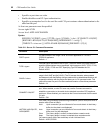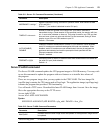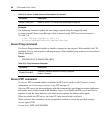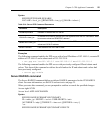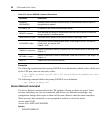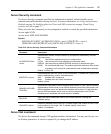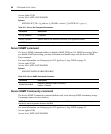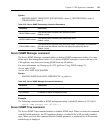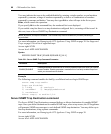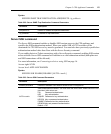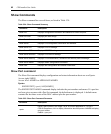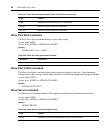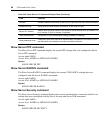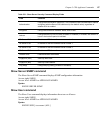
60 CPS Installer/User Guide
You may indicate the traps to be enabled/disabled by entering a single number, several numbers
separated by commas, a range of numbers separated by a dash or a combinations of numbers
separated by commas and dashes. You may also type
ALL to select all traps in the list or press
Enter, which cancels the operation.
If you specify
ALL on the command line, the numbered list is not displayed.
If you enable a trap but there is no trap destination configured for it, a warning will be issued. In
this case, issue a Server SNMP Trap Destination command.
NOTE: By default, all traps are disabled. The PortAlert trap must be enabled for port alert processing to
be performed.
For more information, see Managing the CPS Appliance Using SNMP on page 30. See Supported
Traps on page 82 for a list of supported traps.
Access right: SCON
Access level: APPLIANCEADMIN
Syntax
SERVER SNMP TRAP [ENABLE|DISABLE] [ALL]
Example
The following command enables the linkUp, userDeleted and userLogin SNMP traps.
server snmp trap enable
Traps now disabled:
1) linkUp 4) userLogin
2) userAdded 5) imageUpgradeStarted
3) userDeleted
Select trap(s) to enable>1,3-4
Server SNMP Trap Destination command
The Server SNMP Trap Destination command defines or deletes destinations for enabled SNMP
traps. Once you define destinations for enabled SNMP traps, when a trap occurs, the CPS appliance
will generate SNMP trap messages to each defined SNMP trap destination. You may define up to
four trap destinations, using separate commands.
For more information, see Managing the CPS Appliance Using SNMP on page 30.
Access right: SCON
Access level: APPLIANCEADMIN
Table 5.21: Server SNMP Trap Command Parameter
Parameter Description
ENABLE|DISABLE
Enable generates a numbered list of currently disabled traps from which you choose
those to enable. Disable generates a numbered list of currently enabled traps from
which you choose those to disable.



